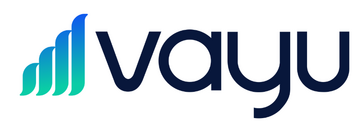- Zenskar is a platform that automates invoicing and revenue recognition, handling complex billing structures and financial reporting.
- Reviewers frequently mention the user-friendly interface, the ability to handle complex contracts, seamless integration through an API-first approach, and excellent customer support via Slack and Zoom.
- Reviewers noted that the initial setup with Zenskar requires some adjustment and the reporting dashboard has a learning curve.
Best Usage-based Billing Software
Featured Usage-based Billing Software At A Glance
G2 takes pride in showing unbiased reviews on user satisfaction in our ratings and reports. We do not allow paid placements in any of our ratings, rankings, or reports. Learn about our scoring methodologies.
A weekly snapshot of rising stars, new launches, and what everyone's buzzing about.
- Overview
- Pros and Cons
- Seller Details
Chargebee is the billing and monetization platform built for the AI economy. From fast-scaling startups to global enterprises, we help companies capture, optimize, and scale revenue — no matter their
- CEO
- Founder
- Computer Software
- Information Technology and Services
- 73% Small-Business
- 22% Mid-Market
7,348 Twitter followers
- Overview
- Pros and Cons
- Seller Details
Zenskar is an AI-Native Order-to-Cash platform that automates billing, revenue recognition, collections, and SaaS metrics for modern finance teams. Talk to Zenskar like a colleague. Ask questions,
- Computer Software
- Information Technology and Services
- 58% Mid-Market
- 34% Small-Business
- Zenskar is a platform that automates invoicing and revenue recognition, handling complex billing structures and financial reporting.
- Reviewers frequently mention the user-friendly interface, the ability to handle complex contracts, seamless integration through an API-first approach, and excellent customer support via Slack and Zoom.
- Reviewers noted that the initial setup with Zenskar requires some adjustment and the reporting dashboard has a learning curve.
- Overview
- Pros and Cons
- Seller Details
Sequence is an all-in-one CPQ, billing, metering and revenue recognition platform for B2B SaaS companies. Automate billing for every custom contract. Stop revenue leakage, avoid billing errors, and
- Computer Software
- Financial Services
- 72% Small-Business
- 28% Mid-Market
- Sequence is a billing system that streamlines financial operations and supports complex pricing scenarios, recurring billing cycles, and customer invoicing.
- Reviewers like the intuitive interface, automation features, and the platform's ability to handle complex billing scenarios, with many praising the responsive customer support and seamless integration with other systems.
- Users reported issues with unclear communication regarding pricing and voucher processes, lack of connection with certain accounting software, and the inability to duplicate schedules for more than one client at a time.
344 Twitter followers
- Overview
- Pros and Cons
- Seller Details
DualEntry is the AI-native ERP that helps finance teams achieve more in less time. With powerful automations, it takes manual work out of everything from everyday accounting, AR/AP, and revenue manage
- Accountant
- Accounting
- Manufacturing
- 49% Mid-Market
- 34% Small-Business
- DualEntry is an accounting software that automates data entry and reconciliation, streamlines workflows, and provides real-time financial reports.
- Reviewers appreciate DualEntry's user-friendly interface, AI-powered features, and seamless integration with existing tools, which enhance productivity and accuracy in financial management.
- Reviewers noted that DualEntry's initial setup can be time-consuming, and some advanced features lack detailed documentation, which can make the learning curve steeper for more complex tasks.
591 Twitter followers
- Overview
- Pros and Cons
- Seller Details
Recurly is the subscription management and recurring billing platform built to help businesses grow revenue, reduce churn, and scale globally. We help customers from across verticals including streami
- CEO
- Account Manager
- Computer Software
- Information Technology and Services
- 51% Small-Business
- 40% Mid-Market
3,529 Twitter followers
- Overview
- Pros and Cons
- Seller Details
At Maxio, we help B2B SaaS companies unlock their next stage of growth. Our financial operations platform is designed to meet the unique financial challenges of B2B SaaS, including billing, subscript
- Controller
- CFO
- Computer Software
- Information Technology and Services
- 53% Small-Business
- 44% Mid-Market
- Maxio is a platform for managing invoices and receivables, offering features such as automation, integration, and detailed reporting.
- Reviewers appreciate Maxio's user-friendly interface, robust subscription management, and revenue recognition capabilities, as well as its quick and helpful customer support.
- Reviewers experienced issues with Maxio's reporting capabilities, slow loading times, and complex setup, particularly for new users and when dealing with multicurrency invoicing.
4,875 Twitter followers
- Overview
- Pros and Cons
- Seller Details
Zuora Billing is enabling companies to monetize new innovations fast, while scaling and automating billing processes. Companies leveraging Zuora Billing are able to unlock new growth strategies with 5
- Computer Software
- Information Technology and Services
- 52% Mid-Market
- 39% Enterprise
19,132 Twitter followers
- Overview
- Pros and Cons
- Seller Details
ZoneBilling is a NetSuite-native billing solution that automates and connects recurring billing, revenue recognition, and reporting in an auditable workflow, without the need for bolt-on tools or thir
- Computer Software
- Information Technology and Services
- 86% Mid-Market
- 10% Enterprise
- ZoneBilling is a payment platform that accepts payments from businesses and provides budgeting tools for projects and tasks.
- Reviewers frequently mention that ZoneBilling is easy to use, automates recurring invoices, handles different billing models, integrates with Salesforce, and provides efficient budgeting tools, saving costs and reducing errors.
- Users mentioned that the initial setup of ZoneBilling can be complicated, the interface could be simpler for new users, and the support team sometimes takes longer to respond than expected.
84 Twitter followers
- Overview
- Pros and Cons
- Seller Details
Ordway is the world’s most flexible billing and revenue automation platform - specifically designed for today’s innovative “as-a-Service” business models. With Ordway you can bill for subscriptions an
- CFO
- Computer Software
- Financial Services
- 60% Mid-Market
- 38% Small-Business
215 Twitter followers
- Overview
- Pros and Cons
- Seller Details
Zoho Billing is an end-to-end billing solution for growing businesses. It is designed to streamline your billing and invoicing processes, so you can focus on scaling your business. With a user-friendl
- Information Technology and Services
- Computer Software
- 69% Small-Business
- 19% Mid-Market
136,279 Twitter followers
- Overview
- Pros and Cons
- Seller Details
Billsby is a feature rich “Saas” recurring payment platform, ranked as the leading subscription billing software by G2. Billsby is designed to ensure customers can go live quickly, often within 1-2 h
- CEO
- Owner
- Financial Services
- Consumer Services
- 99% Small-Business
- 1% Mid-Market
37 Twitter followers
- Overview
- Pros and Cons
- Seller Details
Vayu is a finance-native platform designed to unify flexible pricing, billing, and revenue automation into a comprehensive contract-to-cash system. This innovative solution caters specifically to orga
- Computer Software
- 80% Mid-Market
- 20% Small-Business
- Overview
- Pros and Cons
- Seller Details
OneBill is an end-to-end billing & monetization platform for global scale. Businesses across regions trust OneBill to power their entire billing & monetization lifecycle, from subscriptions to
- Telecommunications
- Information Technology and Services
- 88% Small-Business
- 10% Mid-Market
1,251 Twitter followers
- Overview
- Pros and Cons
- Seller Details
SubscriptionFlow is a subscription and revenue management platform that helps businesses to optimize subscription revenue. The software enables subscription businesses to manage subscriptions, recurr
- Marketing and Advertising
- 67% Small-Business
- 30% Mid-Market
189 Twitter followers
- Overview
- Seller Details
LogiSense is a cloud-based billing platform, specifically designed for today’s usage-based economy. Its built-in flexibility allows businesses to offer customers a wide variety of usage and subscripti
- Telecommunications
- 42% Mid-Market
- 32% Small-Business






